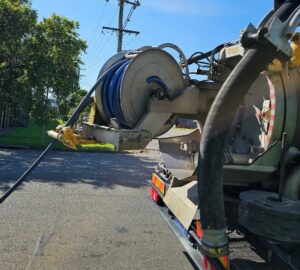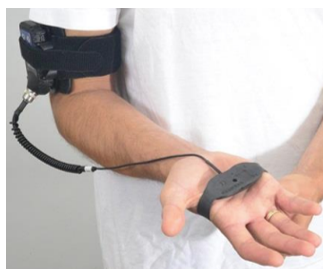Project Overview
When the Assets and Facilities team at a local council contacted us, they had a pressing concern. Were their operators at risk from hand arm vibration (HAV) while using high pressure water lances on vacuum trucks?
Water lances and vacuum trucks are used for stormwater cleaning, non-destructive digging, and dislodging clogged materials. The lance, operated manually, has the potential to expose workers to vibration over long periods. If not properly assessed long-term conditions like hand arm vibration syndrome or vibration related carpal tunnel syndrome could be a risk.
Advitech’s specialised team assessed the risks, combining knowledge of safety standards with technical expertise to deliver clear, actionable guidance.
Initial Problem and Challenges
 Hand-arm vibration is a well-known risk for operators of handheld tools and machinery. Without thorough assessment, workers may unknowingly be exposed to vibration levels that can lead to permanent injury.
Hand-arm vibration is a well-known risk for operators of handheld tools and machinery. Without thorough assessment, workers may unknowingly be exposed to vibration levels that can lead to permanent injury.
Our primary challenge was designing a testing program that accurately reflected real-world usage. To do this, we needed a thorough understanding of how the equipment was used day-to-day. Capturing reliable data meant coordinating closely with the council, briefing operators, and deploying the right monitoring tools.
Given the precision required, we also had to ensure correct equipment setup, sensor calibration, and operator engagement. This was critical to guarantee consistent contact with the force sensor and maintain the integrity of the measurements.
Technical Solutions
Using a triaxial vibration meter, we measured the forces experienced by the operator’s hands during work tasks. To ensure we captured both hands, we had to pause each activity halfway through to swap the sensor. It wasn’t the easiest setup, but it was essential to get it right.
We analysed the results using the European Union’s Hand-Arm Vibration Directive, which sets clear thresholds for safe exposure to vibration in the workplace. The exposure thresholds are measured in metres per second squared (m/s²) and help determine when action or intervention is required:
- Exposure Action Value (EAV): 2.5 m/s²
If daily exposure exceeds this level, employers must take steps to reduce risk such as reviewing work practices or rotating tasks. - Exposure Limit Value (ELV): 5.0 m/s²
This is the maximum allowable daily exposure. If exceeded, immediate controls must be implemented to protect workers.
The exposure thresholds are based on an 8-hour reference period, meaning the total vibration exposure over a standard workday. The directive is designed to prevent long-term health issues such as vibration white finger and carpal tunnel syndrome.
What the Data Told Us
The results gave us a clear view of which activities posed a risk and how long an operator could safely perform them before reaching the EAV or ELV. We provided a breakdown of vibration exposure per task, including the operational duration required to exceed each threshold.
While we didn’t assess individual medical histories, the findings gave the council the insights they needed to make informed decisions about equipment use, task scheduling, and worker safety.
Conclusion
This wasn’t just a technical exercise. It was about making sure that the people doing tough, hands-on work aren’t unknowingly putting their health at risk. By understanding the vibration exposure and applying the right standards, the council can now take steps to protect their team, whether that’s adjusting work durations, rotating tasks, or exploring equipment design changes.
Every project like this reinforces the importance of real-world testing and collaboration. Our team’s ability to translate complex standards into practical safety measures is what makes the difference. And for the council, it means peace of mind knowing they’re doing the right thing for their people.
Featured image: Triaxial vibration meter [Source, Svantek SV103 Daily Vibration Exposure Meter User Manual]

